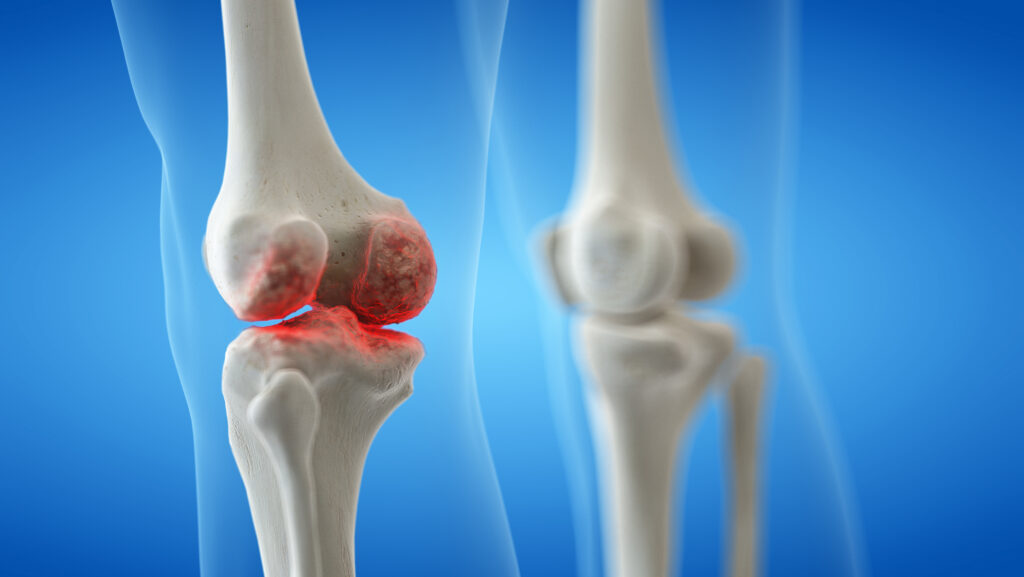International experts from the American College of Rheumatology (ACR) and the European Alliance of Associations for Rheumatology (EULAR) have recently partnered to produce the much-anticipated classification criteria for antiphospholipid syndrome (APS), which were published in Arthritis & Rheumatology in August 2023.1 Prior to the publication of the new ACR/EULAR APS classification criteria, research studies used the Sapporo criteria, published in 1999 and revised in 2006, which delineated a classification scheme for APS based on clinical features of vascular thrombosis or obstetric morbidity, in addition to laboratory criteria.2,3 Since 2006, the understanding of APS has evolved to include the characterization of antiphospholipid antibody (aPL)-associated nonthrombotic clinical manifestations, such as microvascular and cardiac valvular complications, in addition to the additive roles of a high-risk venous thromboembolism (VTE) profile, such as active malignancy, hospitalization, major trauma and surgery, as well as risk stratification by aPL profile.
It is important to note that the new ACR/EULAR APS classificaton criteria — like all classification criteria — are meant to describe the majority of patients with important features of a given condition, which can be utilized to identify clear-cut and homogenous patient cohorts for high-quality studies and clinical trials.4 These are in contrast to diagnostic criteria meant to assist a clinician in reaching an accurate diagnosis. The revised Sapporo criteria classify patients as having APS based on clinical features, including thrombotic or obstetric morbidity, and laboratory testing for lupus anticoagulants (LAC), anticardiolipin IgG and IgM antibodies (aCL) and anti-β2 glycoprotein-I IgG and IgM antibodies (aβ2GPI), with at least two aPL tests performed at least 12 weeks apart within 5 years of the clinical manifestation.3 The new ACR/EULAR APS classification criteria require at least one positive aPL test within 3 years of identification of aPL-associated clinical manifestations.1 Laboratory domains include aPL testing by coagulation-based functional assays (LAC test) and solid-phase enzyme-linked immunosorbent assays for aCL and aβ2GPI IgG and IgM. Within the new classification criteria, patients are classified based on a weighted point stratification system across clinical and laboratory domains. Different weight is assigned in the laboratory domain based on the presence of moderate or high positive IgG or IgM aCL and/or aβ2GPI positivity, and single versus persistent LAC positivity. Persistent is defined by having two positive tests for aPL at least 12 weeks apart.1 In contrast to the Sapporo criteria, the new 2023 ACR/EULAR APS classification criteria contain features clustered into six clinical domains, weighted from 1 to 5 points for each: macrovascular VTE, macrovascular arterial thrombosis, microvascular, obstetric, cardiac valve, and haematological domains.1 For research purposes, patients are classified as having APS if they have at least 3 points from clinical domains and 3 points from laboratory domains.1 Even though the revised Sapporo criteria acknowledged the need for recognition of two subgroups of patients with APS based on the presence or absence of additional risk factors for thrombosis (both inherited and acquired), the new ACR/EULAR APS classification criteria provide a weighted assessment based on whether a high-risk VTE or cardiovascular disease profile is present.1,3
The new APS criteria have a higher specificity compared with the 2006 revised Sapporo classification criteria (99% versus 86%).1 This comes at the expense of a lowered sensitivity of the new criteria at 84% compared with the 99% sensitivity of the revised Sapporo criteria.1 The authors determined sensitivity and specificity using two separate validation cohorts (n=284 per cohort) to compare the performance characteristics of the revised Sapporo criteria with those of the new APS classification criteria against consensus by three independent adjudicators who represented the “gold standard”. These independent adjudicators were blinded regarding all prior discussions of criteria generation, weighting, and classification threshold identification and were unaware of the proposed classification criteria.1 The higher specificity of the new APS criteria will contribute to high-quality epidemiological and clinical trials in APS, which will improve patient care in the long term; however, the decreased sensitivity could lead to not classifying some patients with APS who do, in fact, have the syndrome.1,3 This may lead to the omission of patients with uncertain APS from future research studies, further complicating our ability to gain information on this subgroup. Another potential limitation of the new APS classification criteria is that the cohort used in the creation of the criteria did not encompass subpopulations of patients, such as patients with aPL-positive systemic lupus erythematosus, individuals of non-White race/ethnicities, the paediatric population, or non-academic cohorts.1
In 2020, the ACR produced guidelines for the management of reproductive health in rheumatic and musculoskeletal diseases (RMDs), which included, among many other recommendations, guidance regarding contraceptive options and anticoagulation during pregnancy and postpartum in patients with positive aPL tests and APS.5 The 2020 ACR reproductive guidelines defined APS based on the revised Sapporo classification criteria.3 As both the revised Sapporo criteria and the new ACR/EULAR APS classification criteria define persistent aPL positivity as having two positive test results at least 12 weeks apart and both require aCL or aβ2GPI to be ≥40 units (or >99th percentile), the new ACR/EULAR APS classification criteria do not affect the recommendations and good practice statements for the use of contraceptives in patients with RMD put forth in the 2020 ACR reproductive health guidelines.1,3,5 The presence of aPL positivity is a contraindication to the use of oestrogen-containing contraceptives due to the potential to further increase thrombosis risk.5
On the other hand, because the 2020 ACR reproductive health guidelines base their recommendations on anticoagulation during pregnancy and postpartum on the revised Sapporo criteria, this does leave some questions regarding the management of specific subgroups of patients who are classified differently between the revised Sapporo criteria and the new ACR/EULAR APS classification criteria.5 For example, one component of the definition of obstetric APS in the new criteria now includes three or more consecutive pre-foetal deaths (<10 weeks) and/or early foetal (between 10 weeks 0 day and 15 weeks 6 days) deaths or one or more foetal deaths between 16 weeks 0 day and 33 weeks 6 days of gestation in the absence of pre-eclampsia with severe features or placental insufficiency with severe features, as opposed to one or more foetal losses at ≥10 weeks with normal foetal morphology required to meet that aspect of the revised Sapporo criteria.1,3 This means that patients who would have met the criteria for obstetric APS under the revised Sapporo criteria, such as experiencing one foetal loss between 10 weeks 0 day and 15 weeks 6 days, will now no longer be classified as having APS for research purposes under the new ACR/EULAR APS classification criteria unless they also have additive points based on having other clinical criteria. If this group is omitted from future studies that use the new criteria, there will be a paucity of data about the value of prophylactic anticoagulation in this population. It remains to be determined whether this subgroup of patients still has obstetric APS and whether they should receive prophylactic anticoagulation during pregnancy and postpartum. As the 2020 ACR reproductive health guidelines were developed using the revised Sapporo criteria, this subgroup would qualify for prophylactic anticoagulation when using those guidelines.5 Further studies are needed to understand the utility of anticoagulation in this subgroup. New avenues of research might explore comparisons of patients classified as having APS under the new ACR/EULAR APS classification criteria with those who are no longer classified as having APS under the new criteria.
Another question that is prompted by the new ACR/EULAR APS classification criteria is whether there is utility in anticoagulation of patients during pregnancy who meet the classification criteria for APS based on domains other than thrombotic and obstetric (such as those meeting APS classification criteria based on cardiac valve or microvascular domains). As the current 2020 ACR guidelines were developed prior to the new ACR/EULAR APS classification criteria, further studies are needed to understand the dosing and duration of anticoagulation during pregnancy and postpartum for patients who meet the classification criteria for APS based on the cardiac valve and microvascular domains or due to additive points across haematological or other clinical domains. However, as alluded to by Tektonidou et al., even if patients are not classified as having either thrombotic or obstetric APS, in order to evaluate their preconception risk and determine a plan for anticoagulation during pregnancy, it is vital to take into account the presence of other high-risk factors associated with thrombotic and obstetric events, including a high-risk aPL profile, the coexistence of other systemic autoimmune diseases and the presence of traditional cardiovascular risk factors.6 These authors define a high-risk aPL profile as the presence of an LAC, the presence of double (any combination of LAC, aCL or aβ2GPI) or triple (all three subtypes) aPL positivity or the presence of persistently high aPL titres.6 Clinicians must rely on patients’ constellation of risk factors, including their autoantibody profiles, to drive clinical decision-making to help fill in current gaps in knowledge about the disease course and management, particularly in women who have non-criteria clinical manifestations, such as microvascular manifestations.
In summary, the new ACR/EULAR APS classification criteria will promote the inclusion of a more homogeneous population of patients in research studies.1 As we care for our patients with RMD during their reproductive years, we must be mindful that this is classification criteria and not diagnostic criteria, as the lower sensitivity of the new criteria could lead to the exclusion of some patients who do, in fact, have APS or have uncertain APS and could benefit from anticoagulation during pregnancy and postpartum. The new ACR/EULAR APS classification criteria should be commended for incorporating the criticisms from other task forces; however, further studies are needed to help delineate the utility, dosing and duration of anticoagulation for unique and uncertain patient subgroups with RMD during pregnancy in order to avoid undertreatment.7–9














